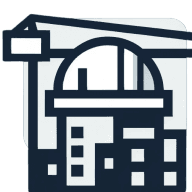How to Foster a Positive Work Environment On Construction Sites
Creating a positive work environment on construction sites is crucial for safety, productivity, and team morale. This article delves into practical strategies that have been proven effective by industry experts. From daily toolbox talks to transparent communication, discover how to build a collaborative and empowering atmosphere on your construction site.
- Daily Toolbox Talks Foster Safety and Camaraderie
- Lead by Example to Inspire Positive Attitudes
- Empower Teams Through Transparency and Goal-Setting
- Open Communication Builds Trust and Collaboration
Daily Toolbox Talks Foster Safety and Camaraderie
Daily toolbox talks have been our most effective strategy for maintaining positivity and productivity. Each morning, we gather crews for a 15-minute session to discuss safety, address concerns, and recognize excellent work. Last summer, during an extensive commercial project in San Diego, temperatures soared to 105°F. We implemented a buddy system through our morning talks where team members monitored each other for heat stress and coordinated breaks. This simple approach not only prevented heat-related incidents but also fostered genuine camaraderie and mutual respect that carried through to future projects.

Lead by Example to Inspire Positive Attitudes
One of the best strategies I use to keep a positive and productive work environment on the job site is leading by example without acting like I'm above the work.
In construction, respect is earned through action. It sets the tone when the crew sees you picking up trash, loading heavy materials, or staying late to get something done right. And doing it all with a positive attitude. That type of attitude is contagious.
I remember a remodel project where we hit unexpected delays like bad weather, permit hiccups, and a client who kept changing their mind throughout the whole project. Morale started slipping fast. So instead of barking orders or stressing the guys out even more (which is very prevalent in the field), I showed up early with coffee and breakfast burritos for the crew one morning and just said, "We've got this, let's make it happen."
That small gesture flipped the vibe completely. We rallied, broke up the big problems into smaller tasks, and communicated constantly throughout the day.
I made it a point to check in with each guy, not just about work, but how they were doing. Within a week, we were back on track and finishing ahead of schedule.
The truth is, job sites run better when people feel like they're part of a team and not just a checklist or a number. When you foster respect, communication, and a bit of humor throughout the day, even tough jobs feel manageable.
It's all about human connection, positioning yourself as someone to trust, depend on, look up to, and setting the example for others to follow. If that doesn't work, then caring nudges in the right direction are usually taken with less resentment in my experience.
-Travis is a lifelong builder and creator of Tekton Travis, a hands-on blog where he shares DIY tutorials, tool tips, and hard-earned lessons from decades in the trades. He's passionate about helping others work smarter, lead better, and build with confidence.

Empower Teams Through Transparency and Goal-Setting
Leading with Transparency and Team Empowerment
One key strategy I use to maintain a positive work environment is ensuring complete transparency in communication and giving teams a clear sense of ownership over their tasks. On one project, I encouraged team leaders to set goals and track progress openly with their crews, creating a shared sense of responsibility. This fostered a strong team dynamic where everyone felt their contributions mattered, and motivation was naturally high. When teams feel invested in the outcome, they work together more effectively and take pride in their work.
Open Communication Builds Trust and Collaboration
One of the best strategies that I employ to create a positive and productive working environment in construction sites is transparency. From the opening day of a project to the day of inspection, I make sure that every employee knows what they need to do, and most importantly, that they have an opportunity to express their views. Where there is clear communication, this creates trust and ensures that everybody in the team is collaborating peacefully towards the purpose of the project.
For example, on one recent roofing job, we encountered some unexpected structural problems that might have led to a delay. Instead of having the crew work in silence, wondering what the changes were, I called the crew over to inform them about what was happening and how it would affect the schedule. I opened up the conversation to discuss how we might adjust our strategy to meet the schedule. This session not only explained the course of action but also enabled the team to work together and come up with solutions.
By building a culture in which everybody feels informed and included in the solution process, morale and productivity improve. If the crew perceives that their suggestions count and they're able to see the overall picture, they're going to be operating at a higher level. It's not just about getting the work done; it's about working together and encouraging one another through the challenges and toward a shared goal.



